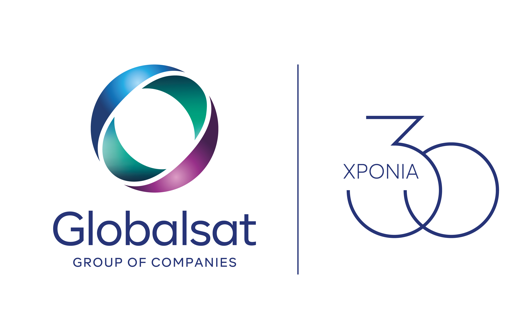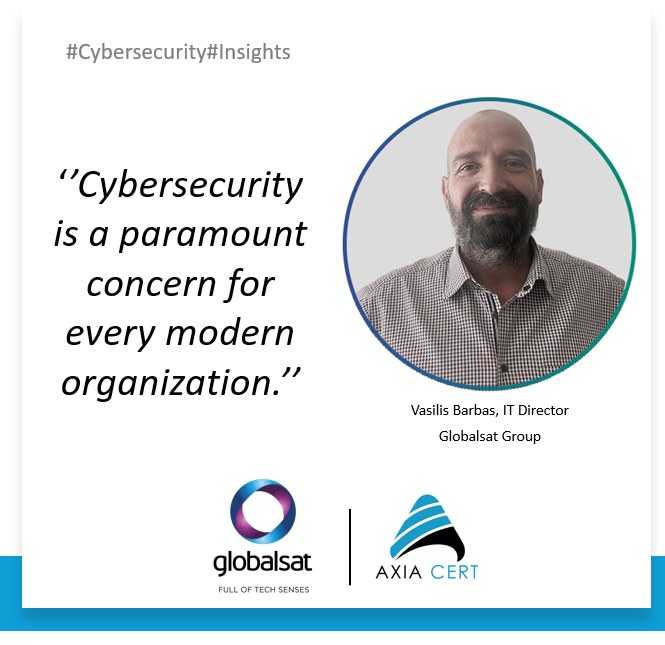Digital security is one of the most important areas of interest for any modern organization. Despite the technical and organizational measures taken to protect against cyber attacks, the human factor remains one of the biggest vulnerabilities. Employees, without intention, can be the gateway for attacks, mainly due to carelessness, lack of training and absence of technical and organizational measures. Let’s analyze the main risks and the solutions that can be implemented.
Vassilis Barbas, IT Director of Globalsat, in his recent publication on the topic of AXIA Cert Information Security, on itsecuritypro.gr, mentions specific elements that organizations can create for effective awareness programs, with the aim of cyber security, while pointing out the ways to prevent possible malicious actions.
Common Human Errors
Use of Weak Passwords: Weak passwords on corporate & personal accounts are one of the most common vulnerabilities. Employees often use easily predictable or common passwords, such as “123456” or “password”. These passwords can be easily cracked using brute force techniques or dictionary attacks. The use of unique, complex codes with a combination of numbers, letters and symbols is essential to enhance security.
Clicking on Malicious Emails (Phishing): Phishing attacks have evolved and become more and more convincing. In fact, with the use of AI, the attack is much more sophisticated at all levels. Attackers create emails that appear to come from trusted sources, leading users to divulge sensitive information or download malware. Training employees to recognize such emails is critical to avoiding these attacks.
Failure to Update Software on Company Devices (Software updates/Patches): Software updates include fixes for known vulnerabilities. Failure to install these updates can leave systems vulnerable to attack. Organizations must implement a strict update policy to ensure all systems are up to date.
Failure to Update Software on Personal Devices (Software updates/Patches) : Personal devices used for business purposes should also be updated regularly. Not updating these devices can create security holes that attackers can exploit. It is noted that BYOD policies are necessary in a corporate environment.
Failure to Update Software on IoT Home Devices (Software updates/Patches): IoT home devices are connected to the internet and are often neglected in terms of security. These devices can be a gateway to attacks if they are not regularly updated with the latest security patches.
Awareness & Training Program for All Employees
Ongoing employee training is critical to protecting an organization from cyberattacks. Implementing a security awareness program can help employees identify and address potential threats.
Organizations should invest in regular seminars and training programs that cover:
Threat Recognition: Employees must be trained to recognize malicious emails, suspicious links and other forms of attacks. Understanding the signs that indicate a potential threat is vital to prevention.
Guidelines for Creating and Managing Strong Passwords: Training in creating strong passwords and using password managers can reduce the risk of account compromise. Employees must understand the importance of not reusing passwords and changing them regularly.
Update on the Latest Threats and Security Best Practices: Staying up-to-date on the latest cybersecurity developments and best practices helps employees be prepared and up-to-date on new threats.
Scenario Analysis: Analyzing real attack scenarios and participating in simulation exercises can help workers effectively respond to real attacks.
Safe Use of Technology Resources: Training in the proper use of company technology resources, such as VPN use, data encryption, and secure browsing, can reduce the chances of successful attacks.
Skills Assessment: Regular assessment of employee skills through anonymous tests and quizzes can help identify knowledge gaps and enhance training programs.
Empowerment and Incentives: Enhancing employee participation and fostering a safety culture can be done through incentivizing and recognizing their effort. Employees must feel accountable and have the confidence to report suspicious activity without fear of repercussions.
Key Points of a Cyber Security Awareness Program
To implement a successful cybersecurity awareness program, organizations must include the following:
Simulation – Phishing Emails: Sending simulated phishing emails can train employees to recognize and avoid such attacks. Analyzing the results can show areas that need improvement.
Internal Updates/Presentations: By establishing specific information days, with short and comprehensive presentations lasting 15-20 minutes, they can keep employees up to date on the latest security developments and practices.
Informational Shared Blog (Intranet): A blog on the company’s internal network can serve as a platform for sharing security information, articles and announcements about cybersecurity.
Activities during Global Cyber Security Month (October): Organizing events and activities during Global Cyber Security Month can increase employee awareness and engagement.
Monthly Corporate Analysis (Cyber Security KPIs): Monitoring and analyzing cyber security key performance indicators (KPIs) can show progress and areas for improvement.
Management Involvement: Management involvement and support is critical to program success. When organizational leaders are actively involved and lead by example, it can boost employee engagement and attention to cybersecurity.
By incorporating these elements, organizations can create an effective cybersecurity awareness program that will go a long way in protecting against cyber threats.
Safety Culture
Cultivating a security culture where cyber security is considered everyone’s responsibility can significantly reduce the chances of a cyber attack being successful. Employees must feel accountable and have the confidence to report suspicious activity without fear of repercussions. With the right training and culture, organizations can turn this weakness into a strength, strengthening their overall defenses against cyberattacks.
Technical and Organizational Measures: The technical and organizational measures that were considered a luxury a few years ago, are now an integral part of any organization that wants to protect its working environment. Some key measures include:
Standard Recorded Policies & Procedures: Creating and following policies and procedures in accordance with security standards such as ISO 27001 can provide a clear guide to information security.
Backup: Regular data backups are essential to recover information in case of loss or ransomware attack.
Encryption (Data & Devices): Data and device encryption ensures that information remains protected even if it falls into the wrong hands.
Firewall Installation & Configuration:
Installing and properly configuring firewalls can prevent unauthorized access to company systems.
Updated Antivirus on All Devices:
Using up-to-date antivirus on all devices can protect against malware and viruses.
Security Awareness Program: Implementing a security awareness program for employees is essential to protect the organization from cyber attacks.
MFA (Multi-Factor Authentication) on All Accounts: Using multi-factor authentication (MFA) adds an extra layer of security to user accounts.
EDR (End Point Detection and Response) on All Devices:
EDR systems can detect and respond to threats in real time, protecting the organization’s devices.
Vulnerability Assessment: Regular vulnerability assessments help identify and address weaknesses in systems.
Penetration Tests: Penetration tests simulate attacks on the organization to identify and fix security gaps.
Security Operations Center (SOC): Having a SOC is critical to monitoring, analyzing and responding to cyber threats in real-time. The SOC acts as the central point of security management, combining technologies, processes and human resources to ensure the continuous protection of the organization’s information systems. This service can detect anomalies and respond immediately to security incidents, reducing response time and limiting the impact of attacks.
Certification according to international standards ISO 27001, ISO 22301, etc.:
Adopting international standards such as ISO 27001 for information security management and ISO 22301 for business continuity management helps ensure a comprehensive approach to security.
In summary, continuous training and the cultivation of a culture of security can transform the human factor from the greatest vulnerability to one of the greatest and strongest strengths of an organization, strengthening the defense against cyber attacks. The technical and organizational measures that 3-4-5 years ago were considered a luxury (nice to have), are now necessary and are an integral part of every modern organization that seeks to protect the working environment.








